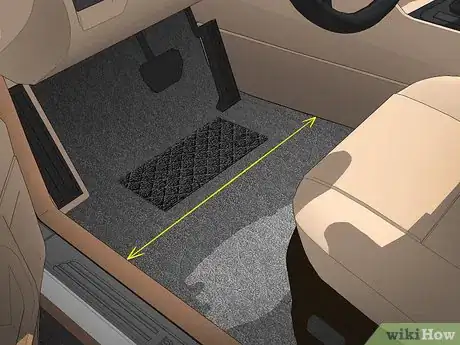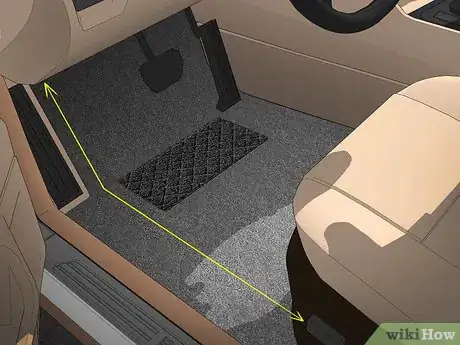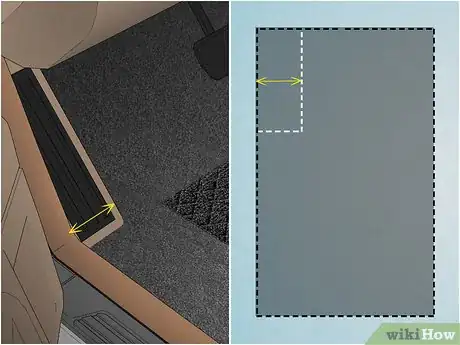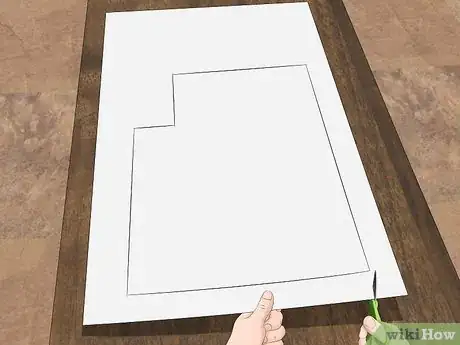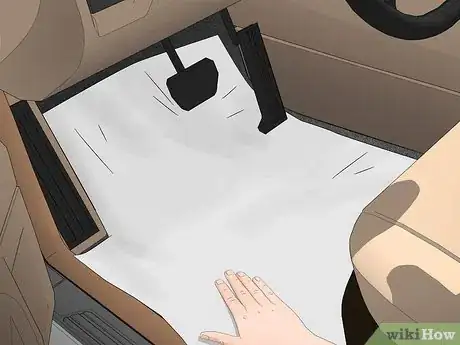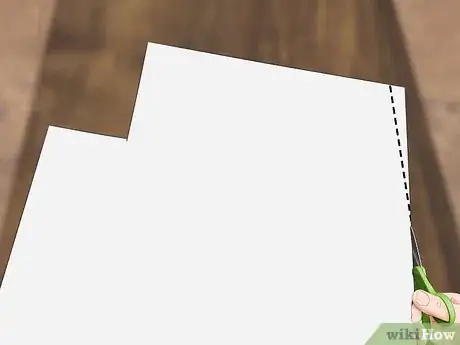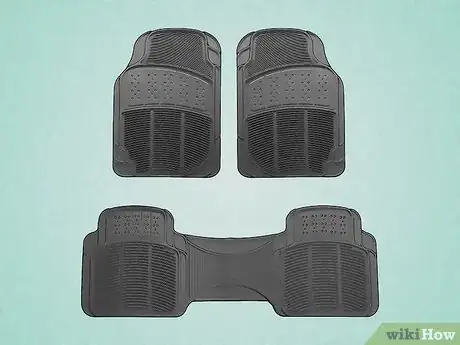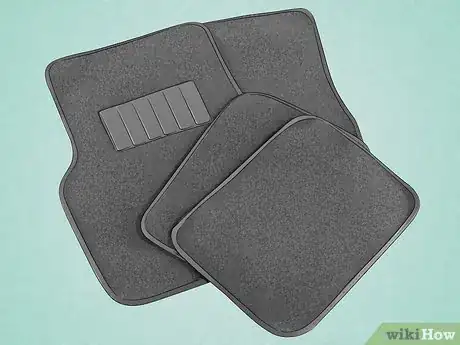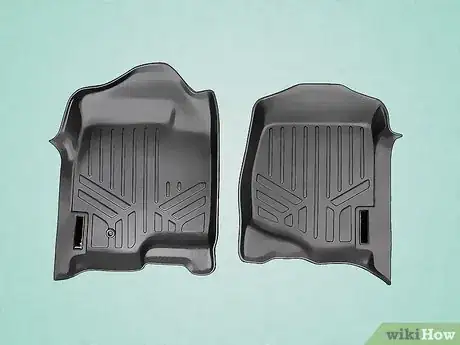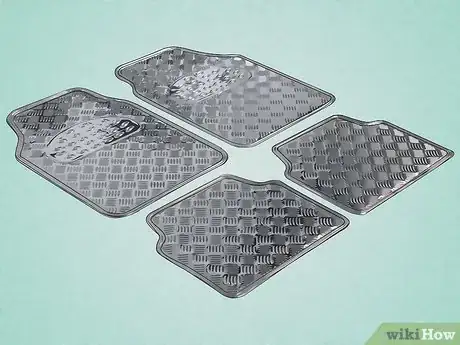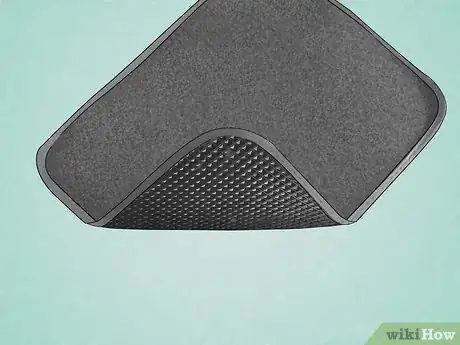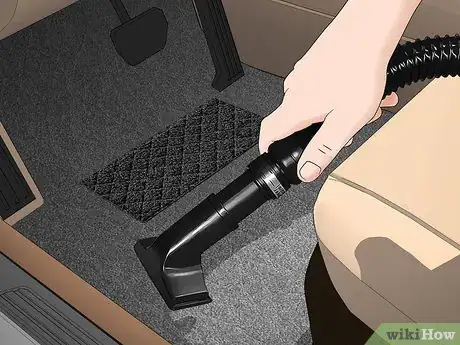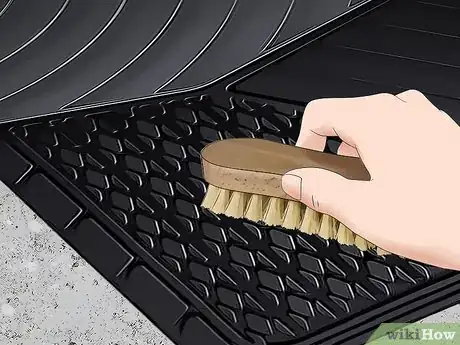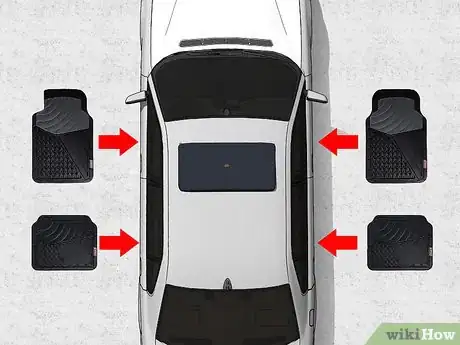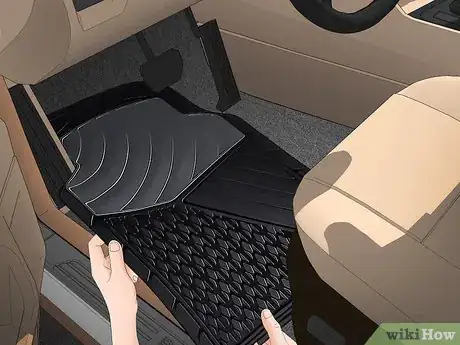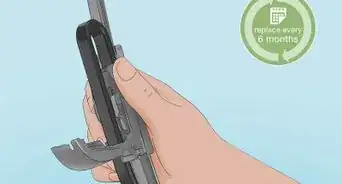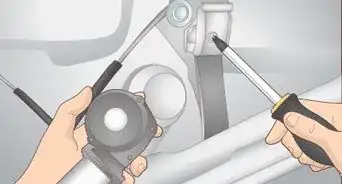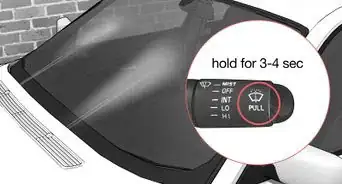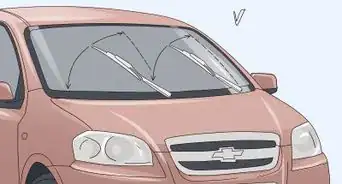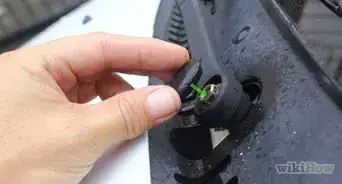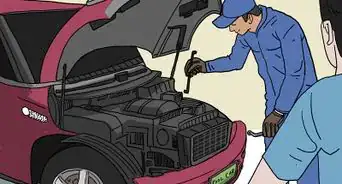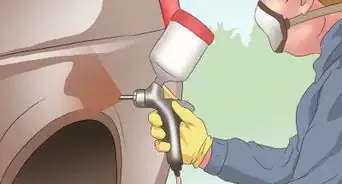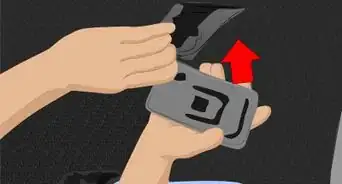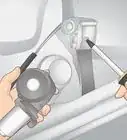This article was co-authored by Chad Zani and by wikiHow staff writer, Amy Bobinger. Chad Zani is the Director of Franchising at Detail Garage, an automotive detailing company with locations around the U.S. and Sweden. Chad is based in the Los Angeles, California area and uses his passion for auto detailing to teach others how to do so as he grows his company nationwide.
This article has been viewed 57,794 times.
Car mats keep the floor of your automobile in good working condition, and they'll help keep your vehicle smelling fresh and clean. By protecting your interior from damage, car mats can keep car cleaning and repair costs down, and they can even help your car maintain its resale value. To make sure your car mats fit your vehicle, take measurements or draw a paper pattern before you shop. Also, make sure you install them securely before driving with them in your vehicle.
Steps
Measuring Your Car Floors
-
1Measure your car’s floor from door to center. Use a measuring tape to find the distance between the door and the center divider between the driver and passenger side seats. Only measure the floor space between these two points. Do not measure from the door itself to the wall of the center divider, since this measurement will be slightly larger than the floor space between both points.[1]
- The center divider in the front will be your car's center console. The center divider in the back will usually be the floor hump.
-
2Measure the floor from back to front. Next, assess the distance between the back of the seat and the front stopping point for each mat. Measure from the furthest point your feet are expected to reach while sitting in that seat. If you aren't sure where that point is, sit in each seat of the car and slide your feet as far up along the floor as possible.[2]
- The length of the front passenger floor mat will be the longest and should cover all of the flat floor space in front of that seat.
- The length of the front driver mat will need to stop just short of the gas and brake pedals.
Advertisement -
3Adjust for irregularities in the perimeter. Measure the space around any obstructions or inclines in the floor to determine how the mat should fit around it. Car mats are never perfect rectangles because the space they cover is never perfectly rectangular.[3]
- If you need guidance, look at some different styles and types of commercial car mats designed for your vehicle or type of vehicle. The measurement of each slant, indentation, and angle may vary from those you'll need for your car, but these other commercial mats should offer some insight.
-
4Create a paper pattern to ensure you get a perfect fit. Trace the measured perimeter onto heavy paper. Cut this pattern out with scissors. Draw a separate pattern for each area of floor in front of each car seat. Compare the paper patterns to car mats you’ll see in automotive stores when you go to purchase them to ensure you are buying the right size car mat.[4]
- These patterns don’t need to look neat, but the measurements need to be accurate.
-
5Fit the paper pattern in your car. Place each paper pattern over the appropriate floor space in your car. Add more paper or cut away sections as needed until each pattern covers the precise space it needs to cover.[5]
- When removing sections of paper to improve the fit, cut away small portions at a time. Stop once that side of the paper lies flat against the floor.
- If you need to add sections of paper, tape them on. Stop once the paper covers the entire flat surface of the floor without bending into any slants or obstructions.
-
6Measure any alterations. If you altered the pattern to improve the fit, measure each straight edge and angle. Write these measurements down.[6]
- This set of measurements will be what you need to provide to the custom car mat service.
- Even if you didn't alter anything, measure the perimeter of the pattern again to make sure that the measurements of the pattern match the measurements you've recorded.
Choosing the Right Mat
-
1Pick a fit style based on your budget. The fit style is what determines how snugly the car mats will fit in your vehicle. Most people opt for standard fit car mats, which are typically all made in one size, and will fit most makes and models of vehicles. These are inexpensive, and they will usually come in a set of 2 front mats and 2 back mats, but they typically won't provide a snug fit for your car. If you're a bit more particular about what goes into your car, there are more advanced options to pick from:[7]
- Improved fit mats generally are a bit more secure than standard mats, as well as a little more durable.
- Vehicle-specific car mats are more expensive than standard mats. They're designed for a specific make and model, so choosing the one made for your vehicle will ensure you get a secure fit. You can usually find these mats at car dealerships and some automotive stores.
- Fully customized car mats are the most expensive. You'll need to find a business that specializes in making them since they aren't commercially available. You will need to provide your car's specific measurements when placing an order.
-
2Choose carpeted or standard mats for an economical option. Most vehicles come from the factory with either carpeted or standard mats. Carpeted mats will protect your floors from some normal wear and tear, but they won’t provide much of a barrier if you spill a liquid. Standard mats, which are often made of plastic or rubber, may protect your floor from some liquid spills, but they won’t offer much more protection.[8]
-
3Select all-weather mats or cargo liners for protection from spills. All-weather mats are an affordable, durable option. They can protect the floor from liquids and stay in place a little more securely than standard mats. Cargo liners are similar to all-weather mats, but they’re made from more rigid materials, making them slightly more durable.[9]
-
4Opt for rubber or heavy-duty mats for a secure fit. Both rubber and heavy-duty mats will stay in place very securely. They’ll also both offer protection against liquid spills, making them a tough, durable option that’s great for families or someone who works in muddy conditions.[10]
- Rubber can crack when exposed to extremely hot conditions.
-
5Purchase metal car mats for a liquid-proof, durable mat. Metal mats are long-lasting and will not allow any liquid to penetrate your car floors. However, they tend to slip around when the car is moving, and they can get very hot if you leave your car parked in the sun.[11]
-
6Select a flat back or a gripper back mat to keep the mats from moving around. Flat-backs have a non-skid coating to prevent slippage, while gripper mats have nubs that secure the mat to the floor. Flat-backs are less secure than gripper mats. However, gripper mats gradually wear away at your interior flooring.[12]
- Also, pay attention to the type of rubber used on the back of the mat. Styrene butadiene rubber is more affordable, but nitrile butadiene rubber is oil-resistant.
Installing Your Car Mats
-
1Remove your old mats and clean the flooring beneath them. Vacuum the carpet covering the car floor. If there are stains and heavy soiling, clean the carpet with water and carpet cleaning shampoo. Allow the car floor to dry thoroughly before you continue.[13]
- You should be able to lift the old mats straight out. Removing old mats will ensure the best fit for your new ones. It's also safer to install new mats directly on the car floor, rather than installing them on top of old mats.
-
2Brush off any dirt or debris before installing the mats in your car. While new mats are usually fairly clean, they may still have some lingering dust on the surface. If you are using second-hand mats, vacuum carpeted mats or scrub hard-surface mats with soap and water. Make sure your mats are fully dry before installing them in your car.[14]
- You can install your mat quicker if you use a blowdryer to dry your second-hand car mat after you’ve washed it.
-
3Match each mat to its location in your car. Spread the mats out somewhere you can see them all at once, such as in a driveway or garage. The car mats may come labeled, but if not, figure out which mat fits where by evaluating their shape and size. Shorter mats usually go in the back, while longer mats often go in the front. You may also see notches in the mats that fit the consoles, wheel wells, or other features in your vehicle.[15]
- If you made paper patterns, compare your mats to those to determine where to place them.
-
4Place the mats in the car. Most mats will simply lie directly over the floor in front of the seats. Some will need to be fitted onto factory retention posts. These posts are hooks or rods located at the center or around the perimeter of your floor in front of the seat, with corresponding latch spots. Secure these latching spots over the retention posts, snapping them in place.[16]
- Make sure that the gripping or non-skid side of the mat faces down as you install it.
-
5Check the fit. Check the mat placement along the pedals and seat base to make sure that the mats do not obstruct any part of them. Try to adjust the seats back and forth, sliding them along the track rails. Work around the perimeter of each car mat, pressing it down in place until it is flat against your floorboard and feels secure.[17]
- Make sure that the mat does not interfere with the smooth operation of the gas and brake pedal.
Expert Q&A
-
QuestionHow do you keep car mats from sliding?
 Chad ZaniChad Zani is the Director of Franchising at Detail Garage, an automotive detailing company with locations around the U.S. and Sweden. Chad is based in the Los Angeles, California area and uses his passion for auto detailing to teach others how to do so as he grows his company nationwide.
Chad ZaniChad Zani is the Director of Franchising at Detail Garage, an automotive detailing company with locations around the U.S. and Sweden. Chad is based in the Los Angeles, California area and uses his passion for auto detailing to teach others how to do so as he grows his company nationwide.
Auto Detailing Expert Use hook and loop tape. This will help the mat stick to the actual carpet beneath it.
Use hook and loop tape. This will help the mat stick to the actual carpet beneath it.
Things You'll Need
- Car
- Car floor mats
- Measuring tape
- Pencil
- Heavy paper
- Scissors
- Tape
- Vacuum cleaner
References
- ↑ https://www.yourmechanic.com/article/how-to-fit-car-mats-by-cheryl-knight
- ↑ https://www.yourmechanic.com/article/how-to-fit-car-mats-by-cheryl-knight
- ↑ https://www.yourmechanic.com/article/how-to-fit-car-mats-by-cheryl-knight
- ↑ https://www.yourmechanic.com/article/how-to-fit-car-mats-by-cheryl-knight
- ↑ https://www.yourmechanic.com/article/how-to-fit-car-mats-by-cheryl-knight
- ↑ https://www.yourmechanic.com/article/how-to-fit-car-mats-by-cheryl-knight
- ↑ https://www.youtube.com/watch?v=Dcu7cToy00k
- ↑ https://www.motorbeam.com/5-types-floor-mats-car/
- ↑ https://www.motorbeam.com/5-types-floor-mats-car/
- ↑ https://www.motorbeam.com/5-types-floor-mats-car/
- ↑ https://www.motorbeam.com/5-types-floor-mats-car/
- ↑ https://www.youtube.com/watch?v=Dcu7cToy00k
- ↑ https://youtu.be/cUmM1D16uJk?t=44
- ↑ https://www.yourmechanic.com/article/how-to-fit-car-mats-by-cheryl-knight
- ↑ https://youtu.be/cUmM1D16uJk?t=30
- ↑ https://youtu.be/cUmM1D16uJk?t=30
- ↑ https://youtu.be/cUmM1D16uJk?t=30
